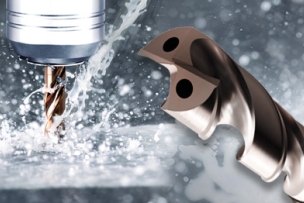More than a century of expertise in cutting tool manufacturing, combined with powerful R&D resources, place Guhring at the forefront of technical innovations in cutting tools. Guhring meets specific customer requirements—from process proposal to production application—with quality cutting tool solutions. With approximately 8,000 employees across the globe, and more than 70 production locations in 48 countries, Guhring is a powerful metalworking resource.
For many holemaking applications, simply drilling a straight hole within the required diameter tolerance is not the only objective. The entrance and exit of the hole may play an important role in the part’s eventual functionality, and removing the burr created during the drilling operation is usually a requirement.
When creating a hole for a tapping operation, chamfering the hole prior to tapping is common practice, and quite frankly a critical operation with regards to the quality of the resulting thread. The chamfer serves multiple purposes. It helps guide the tap into the hole and provides a smooth entry for the tap as it begins to cut or form the initial threads, which translates into improved tool life of the tap. Chamfering the hole also results in a stronger thread of improved quality. Tapping a hole without a chamfer will create an extremely thin layer of material at the top of the thread, resulting in a very weak initial thread. This thin top layer of the thread can end up being pushed down into the remaining threads, or lifted up on top of the hole forming a burr. Burrs remaining at the top or bottom of a threaded hole may inhibit the proper fit or seal with a mating part. Additionally, large chamfers, commonly referred to as countersinks, are often required in parts utilizing flathead screws, which require the heads of the screws to sit flush or slightly below the part’s surface.







Talk to Us!
Leave a reply
Your email address will not be published. Required fields are marked *